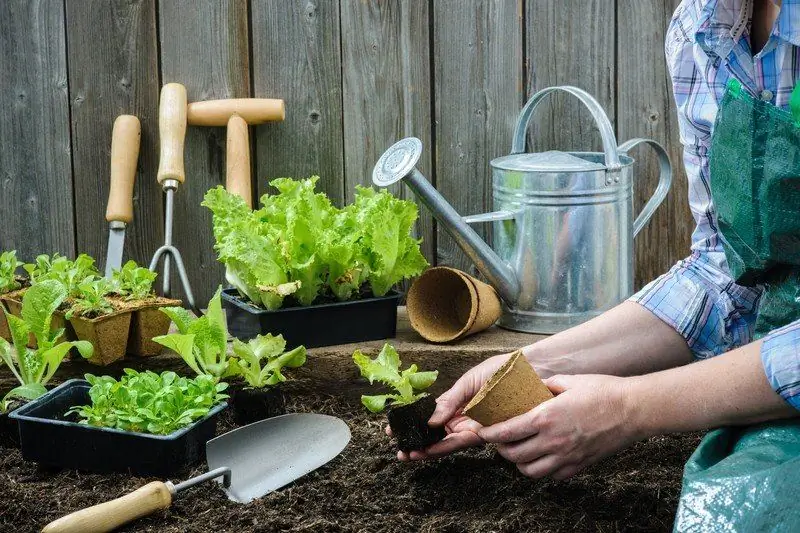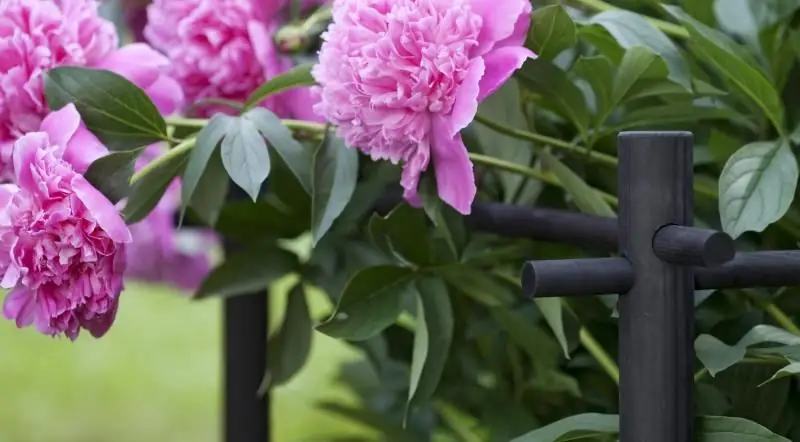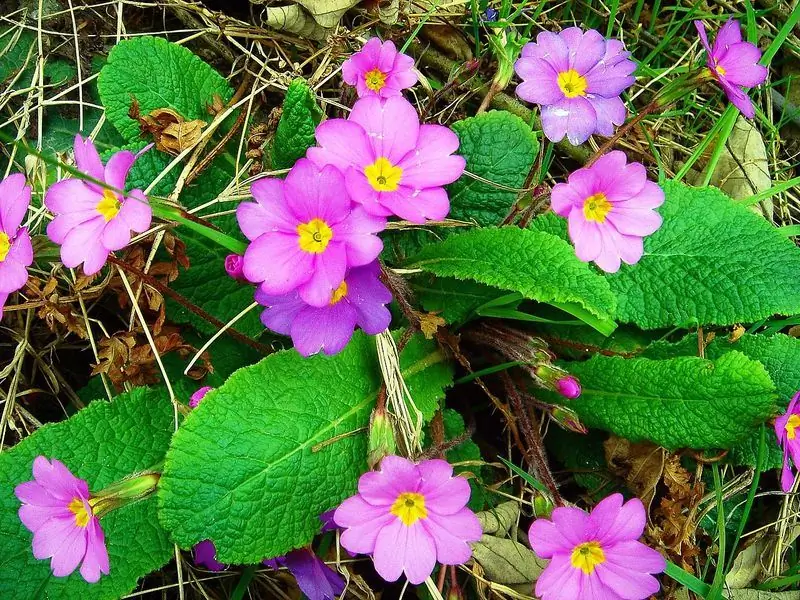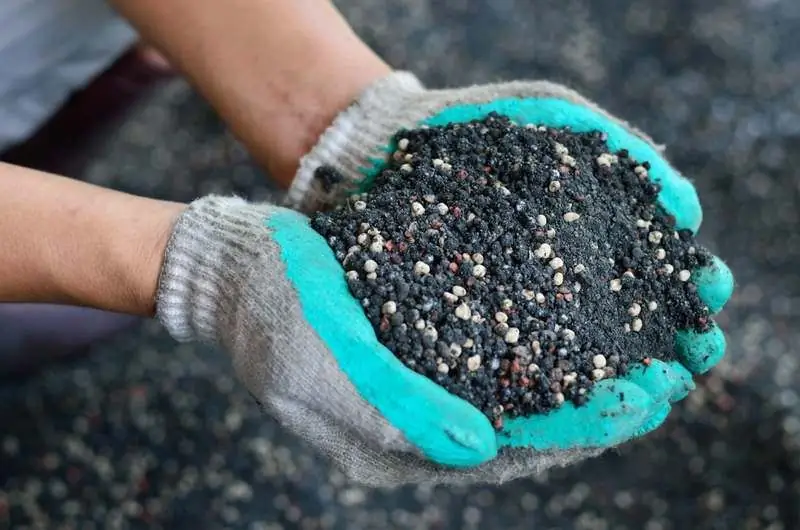
Table of contents:
- Author Bailey Albertson [email protected].
- Public 2023-12-17 12:53.
- Last modified 2025-06-01 07:32.
What can be planted in June in the country: for harvest and beauty

Many gardeners cannot boast of a large plot area, so they try to use the same beds several times per season. An option is also possible when you simply did not have time to land something. June is a good time for many cultures. With such a seemingly late planting, you can still have time to harvest before the frost.
Content
-
1 What can be planted in the garden in June
- 1.1 Video: what greens can be sown in June
- 1.2 Video: June planting carrots
- 1.3 Video: tips and tricks for June planting in the garden
- 2 Reviews of gardeners
What can be planted in the garden in June
Almost all herbs give a quick harvest, so gardeners plant them 2-3 times per season to always be provided with fresh herbs. You can sow seeds both in open ground and in a greenhouse, in front of tall plants:
-
Dill. It is planted until the end of June, 40-50 days pass before the greenery is cut. Experience shows that such "late" greens are even more juicy and aromatic. To harvest faster, soak the seeds in hot (45-50 ° C) water for 15-20 minutes before planting. Please note that crowding in the garden causes the umbrellas to appear very early.

Young dill in the garden Dill, planted not in spring, but in June, has a very strong aroma
-
Basil. The plant is thermophilic. It is planted in open ground starting from the second decade of June, when the threat of return frosts has completely passed. Cut greens during flowering - then it is most fragrant.

Basil in the garden Basil loves warmth, so June is the best time to plant it outdoors.
-
Celery. The first half of June is a good time to plant root celery. Leaves can be cut as they form, tubers can be dug out closer to mid-October.

Root celery harvest Celery roots planted in June can be harvested before frost.
-
Batun onion. It is most often planted three times, the second time is just at the end of June. Feathers are cut as they are formed, after each harvest, it is necessary to feed with an infusion of cow dung or wood ash. It is imperative to remove the arrows, otherwise the greens will be tough.

Onion Batun onions are recommended to be planted three times during the growing season, including in June
-
Fennel. With a long daylight hours, the plant is strongly stretched, "heads" are not formed. If they are needed, fennel is planted when the day has already waned (after June 22).

Fennel harvest Daylight hours beginning to shrink at the end of June contributes to the formation of "bulbs" in fennel
-
Any kind of salad. They, as a rule, are cold-resistant, so you can gradually sow the seeds from the beginning of May, every 2-2.5 weeks. The greens are cut at any stage of ripening. Choose summer varieties for planting in June - they tolerate heat and drought better.

Different types of salad Summer varieties of lettuce are better suited for planting in June - they tolerate high temperatures and moisture deficit well
Video: what greens can be sown in June
June is quite suitable for planting root crops and other vegetable crops:
-
Carrot. Can be sown until the end of the second decade of June. Both early (for food), and mid-season, and late (for winter storage) varieties will have time to mature. It will be necessary to harvest before frost (September-October). This late planting is good because it avoids the attacks of the carrot fly, the peak of which is in May. The most important thing is not to flood the beds in the second half of summer, this dramatically slows down the development of root crops.

Carrot harvest Carrots planted in June suffer much less from such a common pest as carrot fly.
-
Beet. Practice shows: beets planted in the first half of June are stored longer and better than those planted in spring. The same, by the way, applies to turnips. A lot of time (10-14 days) is spent on the emergence of seedlings, then the plants develop very actively.

Beets in the garden Experienced gardeners have noted that the beets planted in June have good keeping quality.
-
Radish. Now there are ultra-early ripening varieties - the harvest ripens in 3 weeks or even less. They can be planted throughout the summer, including June. You just need to pick up an open, well-lit and sun-warmed area, otherwise the roots will form more slowly.

Harvested Radish Breeders have bred a lot of ultra-early ripening varieties of radish, which make it possible to get a harvest not only in June, but also at later planting.
-
Kohlrabi. It is planted with seedlings in the second decade of June. The stems can be harvested towards the end of July, when they grow to 8-10 cm in diameter.

Kohlrabi cabbage Kohlrabi cabbage can be planted in June, but only with seedlings
-
Broccoli. Ripens much faster than normal cabbage, in about 80 days. If you plant its seedlings in early June, it is quite possible to have time to harvest. Peking cabbage, also planted with seedlings, forms heads even faster - in 70-75 days.

Broccoli Broccoli is one of the earliest varieties of cabbage
-
Green beans. It is thermophilic, the optimum air temperature for it is 20-25 ° C. In temperate climates, it is June. To extend the harvesting period from late August to early October, it can be planted twice - in the second and third ten days of June. String beans can be bush and curly - the former ripens faster.

Curly green beans Climbing green beans are not only quick to harvest, they can also be used in landscaping
Video: June planting carrots
In regions with a temperate climate, only the first decade is the time for planting seedlings in open ground. Previously, recurrent frosts were not excluded, from which young plants are likely to be irreversibly damaged. This applies to seedlings of peppers, tomatoes, eggplants, cucumbers, cabbage, any melons and gourds (melons, pumpkins). You can plant early cucumbers and tomatoes in the greenhouse, thereby extending the harvest period.

Most of Russia is characterized by a temperate and sharply continental climate, which prevents the spring planting of thermophilic crops in open ground
As for the decorative flowering plants, June is the best time to plant the seeds of biennial plants that will bloom next year. For example:
-
bells (vary in inflorescence size, flower shape and color);

Bells in the flowerbed Compactly planted bells tend to create a very harmonious color combination
-
Turkish carnation (extremely unpretentious, can multiply by self-seeding, flowers are distinguished by a variety of bright colors and a delicate aroma);

Different varieties of Turkish cloves Turkish carnation is all sorts of shades of pink, red, purple and their combinations
-
viola, she is pansies (the flower is valued for a huge variety of varieties, early and long flowering);

Different varieties of viola Viola is the widest range of varieties, every gardener can find an option to his liking
-
daisy (very delicate flowers that form a continuous "green carpet" on the flower bed);

Blooming daisies Daisy is an extremely unpretentious ground cover plant
-
foxglove (extremely undemanding to care for a tall flower with catchy, bright inflorescences-tassels; pleases with decorativeness from June to September);

Blooming foxglove Foxglove flowers delight the gardener's eye for almost three months
-
stock-rose or mallow (plant height can reach 2-2.5 m, flowers collected in large clusters are white, yellow, all kinds of shades of pink, red, lilac).

Blooming stock roses Not all gardeners succeed in growing ordinary roses, the stock-rose can become a kind of "consolation"
If you need to close the "bald spots" on the flower beds left after the faded bulbs (daffodils, tulips, crocuses), fast-growing annuals are suitable:
-
marigolds (differ in a very wide assortment of varieties with flowers of different sizes, heights, shades; they are not only beautiful, but also useful - many pests cannot tolerate the smell of tops);

Marigold flowers Bright sunny marigolds in the flowerbed invariably cheer up
-
calendula (a very unpretentious and cold-resistant plant, easily propagates by self-sowing; not only decorates the garden, but is also widely used in folk medicine, repels pests);

Calendula flower Calendula is not only an ornamental, but also a very useful plant.
-
snapdragon (it is distinguished by an abundance of varieties and catchiness, spectacular lush ears bloom until the first frost);

Snapdragon bloom Snapdragon is a riot of colors
-
kosmeya (a tall flower, insensitive to drought and low temperatures; with a sufficiently dense planting, you can create a "green wall" decorated with multi-colored "daisies");

Cosmos flowers Cosmea flowers look simple, but surprisingly elegant.
-
nasturtium (liana or shrub with spectacular flowering);

Blooming nasturtium The decorativeness of nasturtium flowers is complemented by its original leaves
-
alyssum (very lush and bright flowering is characteristic, decorativeness is preserved until frost);

Blooming alyssum Russian gardeners got acquainted with alyssum relatively recently, but this plant has already gained popularity
-
godetia (flowers are very large - up to 10 cm in diameter, bright, saturated colors; flowering when planted in early June lasts from mid-July to October).

Godetia flowers Godetia immediately attracts attention with its bright flowers and saturation of shades.
Video: tips and tricks for June planting in the garden
Gardeners reviews
In June, planting work does not end at all. Many crops planted at this time manage to bring a harvest in the time remaining before the cold weather. Of course, when choosing varieties, you need to focus on the climate in the region and take into account when the first frosts will come.
Recommended:
Fences For Garden Beds With Your Own Hands - How To Make A Fence For A Front Garden, Flower Garden Or Vegetable Garden, Step By Step Instructions With A Photo

Options for fences for a suburban area. Their pros and cons. How to install a holder for plastic bushes, a flower bed from bottles: step by step instructions. Video
What Flowers Can Be Planted In The Shade: An Overview Of Plants That Do Not Like The Sun, Photo

A selection of shade-loving and shade-tolerant ornamental plants for summer cottages
Autumn Fertilizers For The Garden And Vegetable Garden: When To Apply And The Better To Feed The Soil

Why feed plants in the fall. Types of autumn fertilizers. Which are suitable for digging soil and feeding trees, shrubs and perennial flowers
What Insects Are Beneficial In The Garden And Vegetable Garden

What beneficial insects can be used to get rid of pests in the garden and vegetable garden
Important Things In The Garden And Vegetable Garden In The Fall

Autumn work in the garden and garden, which should not be forgotten
